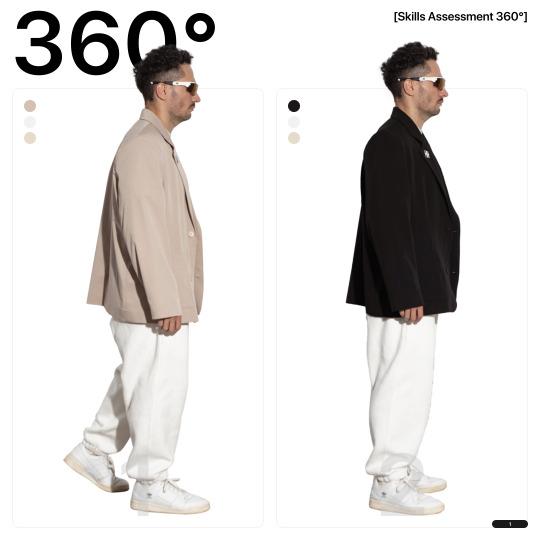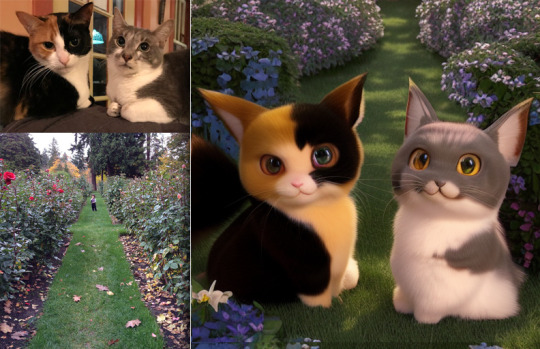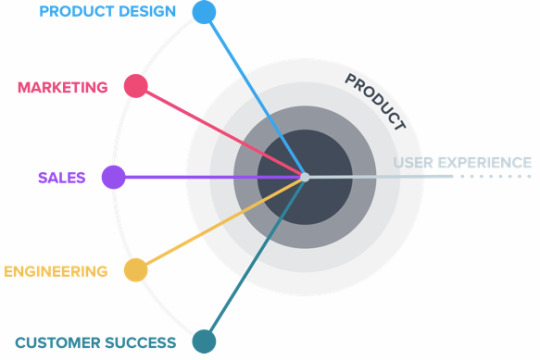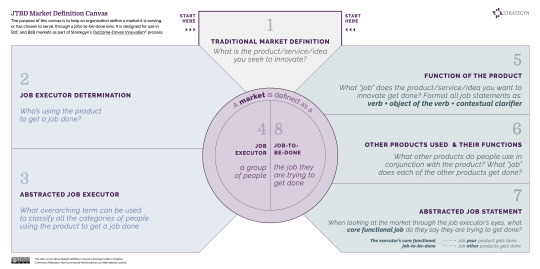#jtbd
Text

Skills Assessment: Planning for a Successful Career in Design and the Arts
In the design world, beginners often overestimate their skills and importance, which can negatively impact their development. Experienced designers, on the other hand, sometimes miss out on growth potential by remaining in a blind spot—an area they don't know about. However, there is a tool that helps designers plan their careers and manage the value of their services.
This tool is the 360° Skills Assessment. It includes both hard and soft skills such as leadership, professionalism, personal effectiveness and entrepreneurship. This framework is based on bew practices such as McKinsey and adapted for design and art.
How does this help? First of all, you get an objective view of your career. You see gaps in knowledge and practical skills that are in demand in the market. This is useful for both freelancers and full-time employees.
On the Skills Scorecard, you'll find specific skills that can be rated on a scale of 0 to 5. For example, Level 1 is understanding the basics, and Level 5 is being recognized as an expert in the field.
What did my assessment show? I achieved level 3 in almost all areas, but avoided reaching level 4 - being recognized as an expert. This explains my active step into social networks and SMM.
Want to do the assessment yourself? Just write “Assessment” or “Skill Assessment” in a private message and I will provide access to the Google spreadsheet. Having a vision for your professional growth is easy!
#arenaslab#valeriarenas#design#art#branding#scifi#ai#lean#startup#business#director#teamlead#headoffdesign#agile#scrum#kanban#designthinking#cjm#jtbd#identity#lab#leanstartup#leanbranding#leandesign#diy#streetwear#trends
0 notes
Link
Congratulations, your learning process is completed!
This last blog article shows the potential of the Jobs-to-be-done method from the beginning till the end of an innovation process. Within this real-life example, you can see that giving up on an idea is not a bad thing, it’s progress in the right direction; the one without having biases!
And when do you start using Jobs-to-be-done? 😉
0 notes
Text
2022 Year in Review
For the last 15 years, I've captured my thoughts on Design, Technology, and Culture in this blog. In this post, I'm going to reflect on what was on my mind by looking back on some stats of my posts in 2022.
For the last 15 years, I’ve captured my thoughts on Design, Technology, and Culture in this blog. In this post, I’m going to reflect on what was on my mind by looking back on some stats of my posts in 2022.
The Most Popular Posts
It looks like Design Strategy and Jobs-to-be-Done were hot this year. Here are the top 3 most popular posts on my blog in 2022:
Bringing Business Impact and User…

View On WordPress
#Artificial Intelligence#Business Decisions#Collaboration#Design Strategy#Facilitation#Inspiration#JTBD#Living in Germany#Problem Framing#R.I.P.#Stakeholder Analysis and Management#Teamwork#Trust Building#Visioneering
0 notes
Text
Thoughts and Resources on AI Art

Generative AI to create images is a game-changing technology that will undoubtedly disrupt the creative marketplace. Sadly, many Illustrators and digital/print artists are done, at least done making money from their art. But there are going to be those already talented artist who will also know (or learn) how to use this digital paintbrush (aka: prompt engineering) to create several iterations before doing the more intricate work of fine tuning.
Art directors will continue to exist and will certainly use AI art to fulfill their needs on the cheap. Of course, a future ai-powered Canva will eventually challenge that role as well. From advertising to entertainment, this technology will certainly accelerate the generative process for so many. I'll be using DreamStudio for the foreseeable future, often replacing my use of stock photography in posts, newsletters, podcast episodes, slide decks and so many options.
I completely understand and appreciate the controversy over the ethics of mimicking artists' styles and copywritten likenesses. People who contribute to this ecosystem should be compensated for their talent and work. But what worries me more is the lack of foresight in establishing regulation for deep fakes, ai-powered photos and realistic art that could lead to harm and disinformation. With Stable Diffusion releasing their open-source public release along with their ethical use, Creative ML OpenRAIL-M license , I'm anxious to learn how their de-centralized mitigation strategies will keep users ethically, legally and morally responsible for harming others and distributing disinformation.
In the meantime, I will continue having fun (and trying to create art) on DreamStudio. And I'll keep adding links below to share what I'm learning along the way:
DreamStudio Lite - The jam!
Prompt Book from OpenArt.ai
PromptBase - A marketplace for prompts (via The Verge) - impressed how quickly this came out but certainly provides that JTBD need
Best 100+ Stable Diffusion Prompts (Metaverse Post)
3 notes
·
View notes
Text
"If you promise not to tell my wife…."
“If you promise not to tell my wife…. I probably hire donuts twice a week.”
That’s what Clayton Christensen said on his famous video about Jobs to be Done [JTBD].
The core idea of JTBD is that people don’t buy products simply for the product’s sake. They “hire” them to solve problems and make progress in their lives.
In Clayton Christensen’s milkshake example, customers weren’t hiring a…

View On WordPress
0 notes
Text
How to create a B2B customer journey map
Certainly! Here’s a concise guide on creating a B2B customer journey map to help you understand your buyers and enhance their experience:
1. Set Goals Unique to Your Business
Before diving into mapping the customer's journey, define your larger business and customer goals. Consider the following questions:
What do you want your customers to achieve? What are their jobs to be done (JTBD)?
Does your business rely on repeat customers, or do you sell larger one-off ticket items?
Different B2B firms have varying objectives. For instance:
GE Renewable Energy, which sells large equipment, may prioritize goals like generating website conversions and creating brand advocates.
Hubspot, a software company, emphasizes onboarding and renewal components to boost customer retention.
2. Identify Your Customer Segments
In the B2B context, the purchasing process is nuanced because the end users of your product or service are often not the same people making the purchasing decision. Multiple individuals may influence a deal:
One person might research how to replace a current tool.
Another person could conduct a demo.
Yet another person may handle the financial aspect.
Identify these different segments and understand their roles in the decision-making process1.
3. Map Out the B2B Customer Journey
Follow these steps to create an actionable B2B customer journey map:
Conduct Research: Gather insights about your customers, their pain points, and their interactions with your brand.
Create Personas: Develop detailed buyer personas for different segments. Understand their motivations, challenges, and needs.
Visualize the Journey: Map out the entire journey, including processes, actions, and interactions. Consider touchpoints like website visits, emails, demos, and customer support.
Take Action: Use the insights from your map to optimize the user experience. Identify areas for improvement and implement changes.
1 note
·
View note
Text
0 notes
Text
Introducing the JTBD Business Studio: Your Ultimate New Business Advisor!
Embark on a transformative journey with our cutting-edge brand, the JTBD Business Studio! We're not just another consultancy; we're your trusted partner in navigating the dynamic landscape of new business ventures.
As your dedicated new business advisor, we provide tailored strategies and actionable solutions to propel your venture forward. From ideation to execution, we're by your side every step of the way.
Whether you're a budding startup or an established enterprise seeking reinvention, the JTBD Business Studio is your ultimate catalyst for growth and prosperity. Let's embark on this exciting journey together!
0 notes
Text
Product Led Growth Framework - Coho Ai
What are the frameworks for product led growth?
Product-led growth (PLG) is a strategy where the product itself serves as the main vehicle for customer acquisition, conversion, and retention. Several frameworks and methodologies can be applied to facilitate product-led growth. Here are some key ones:

RICE Framework:
Reach: How many users will be affected by a particular project?
Impact: What impact will the project have on users or the business?
Confidence: How confident are you in your estimates?
Effort: How much effort will the project require to implement?
North Star Metric:
Identifies the one metric that best captures the core value a product delivers to customers. It aligns the team and focuses efforts on delivering the most value to users.
OKR (Objectives and Key Results):
Objectives: Clear, qualitative goals that are ambitious, inspirational, and time-bound.
Key Results: Specific, measurable, and verifiable metrics indicating progress toward objectives.
HEART Framework (Google):
Happiness: User satisfaction, often measured through surveys or Net Promoter Score (NPS).
Engagement: The level of user involvement with the product, including metrics like active users and session duration.
Adoption: The rate at which new users are adopting key features or functionalities.
Retention: The rate at which existing users are returning to the product.
Task Success: How well users can complete tasks within the product.
Jobs to be Done (JTBD):
Focuses on understanding the underlying motivations of users. People "hire" products to get jobs done in their lives, and understanding these jobs can lead to product improvements.
User Onboarding Frameworks:
Effective user onboarding is crucial for PLG. Frameworks like the Aha! Moment, User Activation Framework, and User Onboarding Tear Down provide structured approaches to optimizing user onboarding processes.
Product-Qualified Leads (PQL):
Identifies leads who have experienced value within the product, using product usage data to qualify potential customers.
Viral Loop Framework:
Encourages existing users to invite new users, creating a viral growth effect. This is often achieved through referral programs and social sharing features.
Freemium Model:
Offers a basic version of the product for free with the option to upgrade to a premium version with advanced features. This allows users to experience the product before committing to a purchase.
Growth Loops:
Focuses on creating loops where the product's usage leads to more users, creating a self-sustaining cycle of growth. Viral loops, engagement loops, and paid loops are common types.
Implementing a product-led growth strategy often involves a combination of these frameworks, tailored to the specific product, target audience, and business goals. Companies iterate and refine their approach based on continuous feedback and data analysis to drive sustainable growth.
#product activation rate#product activation#product qualified lead#pql-driven revenue growth#pql to revenue ratio#pql scoring system#pql sales readiness
0 notes
Text
Sprint mode
"Think of self-competition as a quest for evolution."
In my 9 years as a UX Research practitioner, I've never led research sprints, so this is a first. I wrapped up my first week's worth of Research on Monday and presented it on Tuesday. While the sample was small and the questions laser-focused, recruiting from a non-existent pool of users was an exhausting networking exercise. I devised a hybrid methodology between Jobs-to-be-Done (JTBD) and card sorting. The scrappiness that my role has brought out in me has been insane. There's a level of confidence one needs to have when you're the sole researcher at a startup and I feel like coming up with solutions with crazy time constraints is something I can juggle.
But that doesn't mean it's sustainable. I've mentally prepared for this month, a series of sprints, but that means that life outside of work includes several instances of "I forgot to put it on the calendar" or "my pile of clothes is still sitting there" or "oh fuck, we have construction in our apartment all week - what are we going to do with the cats?" Making time for life has been tricky, but I'm glad I was able to celebrate my cousin's kids' 21st birthday, see my family, and celebrate Gabe's birthday with a movie date + Ikea dinner. I even had a spontaneous dinner after Aritzia with my co-workers?! I let life happen when it can.
Just going to continue reading The Creative Act: A Way of Being for now.
0 notes
Text
How to Create Irresistible Content Using Jobs To Be Done | Bob Moesta | The SaaS Sprints Podcast
youtube
In this episode of The SaaS Sprints Podcast, Bob Moesta, one of the pioneers of the Jobs To Be Done (JTBD) framework and the CEO of Rewired Group, joins us to discuss how to create impactful content using JTBD. Bob talks about how SaaS companies can use the Jobs To Be Done framework to create content across formats such as blogs, product pages, and videos to resonate better with your customers. The episode is packed with insights and tips for creating great content that will drive engagement and conversion. If you're looking to improve your content strategy or create more engaging content, this episode is for you.
0 notes
Text
How to Create Irresistible Content Using Jobs To Be Done | Bob Moesta | The SaaS Sprints Podcast
In this episode of The SaaS Sprints Podcast, Bob Moesta, one of the pioneers of the Jobs To Be Done (JTBD) framework and the CEO of Rewired Group, joins us to discuss how to create impactful content using JTBD. Bob talks about how SaaS companies can use the Jobs To Be Done framework to create content across formats such as blogs, product pages, and videos to resonate better with your customers.
youtube
0 notes
Link
I present you the holy grail to overcome change!
And yes, it really can be that simple, if you know how! Check out my newest blog post and get enlightened on how and why jobs are stable and therefore resistant to change.
Congratulations, you are almost an expert in Jobs-to-be-done! You understood what the method can achieve, and you can set up your own hierarchy. But what now? The next step is to find the job metrics which are the real juice! So stay tuned for the next blog🤓
0 notes
Video
vimeo
Là où sont leurs yeux, les dollars publicitaires suivent. from ITRtv on Vimeo.
Selon Peter Drucker, le concept de Jobs to be Done (JTBD) aide à mieux exécuter les 2 fonctions Marketing et l'Innovation. Parmi les principes clés du concept JTBD : se concentrer sur les besoins des clients ou les tâches restent fondamentales qui restent les mêmes lorsque les produits changent.
Les experts d’Hogan Assessments proposent quelques tactiques efficaces pour neutraliser les risques liés au travail hybride comme détecter les symptômes du leader absent ou rester à l’écoute des demandes non exprimées. L’important est de rester concentrer et de créer une cohésion d’entreprise.
Frédéric Billon, délégué général de la Fédération de la Vente Directe, troisième voie de distribution en France, propose une réflexion sur ce modèle à la fois moderne et agile allie l’humain et le digital au profit d’une relation client riche, optimisée et basée sur la confiance.
Nouvelle année, mêmes habitudes: les consommateurs optent pour un style de vie basé sur des applications. Un récapitulatif du 1er trimestre 2023 montre que les consommateurs passent 5,5 heures sur leur mobile sur les applications, notamment en Indonésie, au Brésil et aux États-Unis. Et là où sont leurs yeux, les dollars publicitaires suivent, avec la publicité mobile représentant une opportunité de 336 milliards de dollars.
N’hésitez pas à regarder la vidéo pour connaître l’intégralité des propos ou à vous connecter sur le site itrtv.com
0 notes
Photo

The Jobs-to-be-Done (JTBD) Market Definition Canvas
0 notes
Text
自動折りたたみ機の敗因は、単純に「綺麗になった衣服をきちんと家具に収納する」というjobs to be done(JTBD)を「(従来の)畳むという行為の自動化」と見誤ってしまったことに尽きると思いますよ。だって、そのJTBDを解決するのに「畳む」必要はないですから。
この手のイノベーションっぽい新技術には「ハエをバズーカ砲で撃ち落とす」かのような無意味に難易度だけ高いものが結構あります。JTBDをきちんと見極めた上でソリューションとマーケット開発をセットで考えることの方が、「こんなことが出来るのか!?」という新基軸の技術開発よりも重要です。
0 notes